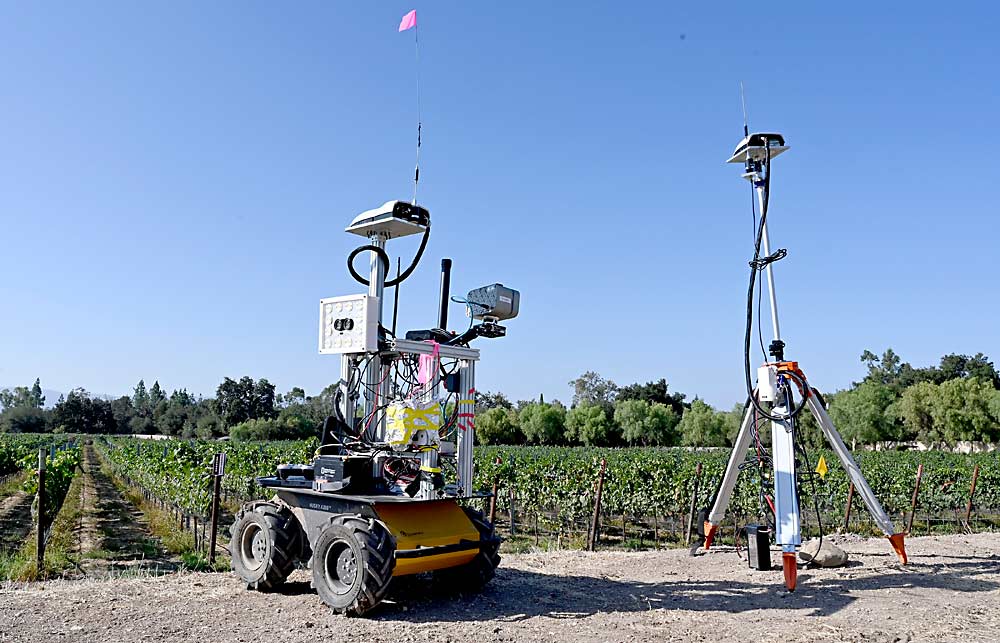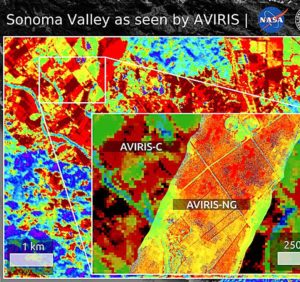
With its new NASA Acres program, the National Aeronautics and Space Administration will use its substantial technological resources to aid American agriculture. And, with help from Cornell University, fruit and other specialty crops will play an important role.
NASA Acres, established earlier this year, is led by the University of Maryland; Cornell will serve as the program’s specialty crops research hub. The point person between Cornell and NASA, assistant professor of grape pathology Katie Gold, aims to build more awareness of the importance of specialty crops — and of their pest and disease challenges.
NASA Acres director Alyssa Whitcraft shares the same goal.
“When talking about agriculture in the United States, most public attention is on commodity row crop and animal agriculture,” Whitcraft said. “However, specialty crops are huge contributors to our national economy and nutrition security. They’re often the most labor-intensive to grow and harvest, face storage restrictions and are often more sensitive to weather events than row crops or rangelands.”
Whitcraft said Gold’s Grape Sensing, Pathology and Extension Lab at Cornell will expand the value of NASA satellite data for specialty crops and provide a model for pest and disease management in other agricultural systems.
Gold has previously worked with NASA. Before she joined Cornell in 2020, she spent nine months in California with NASA’s Jet Propulsion Laboratory, where she used hyperspectral imaging — the study of how light interacts with objects — to detect diseases in grape leaves. Her Cornell lab does similar work in New York vineyards.
NASA’s technological resources can aid agriculture in various ways, such as using satellite imagery to assess evapotranspiration to optimize irrigation scheduling.
On the disease management front, one project is predicting the spread of plant pathogens by tracking global dust currents. Evidence shows that pathogens aerosolize with agricultural dust in dust storms. NASA satellites have monitored dust storms that originate in Africa’s Sahara Desert, travel west across the Atlantic Ocean and deposit dust in the Caribbean and Gulf of Mexico regions, including the Southeastern United States. As regions once hospitable to agriculture become drier, more pathogens could aerosolize and travel across the globe, Gold said.
Gold works closely with Yu Jiang, Cornell assistant professor of systems engineering and data analytics for specialty crops. Their research on pathogen detection technologies mostly focuses on grapes, but they hope their findings will apply to other specialty crops. Partnering with NASA will aid them greatly, giving them access to much greater resources, Jiang said.
Diagnosing diseases in the field takes a lot of human labor and expertise, he said, but linking satellite imagery with remote sensing and field assessments can lead to much faster and more accurate diagnoses.
Jiang is one of the researchers behind the PhytoPatholoBot, an autonomous robot with advanced sensing systems that can capture disease images in a vineyard and develop a map of disease severity. Recent breakthroughs in artificial intelligence should make such technologies cheaper and more accurate in the near future.
Jiang and Gold are developing a model that will use remote sensing and satellite imagery to perform disease detection and prediction work on a large scale. Jiang envisions a cloud-based platform growers will be able to access — a much more affordable approach than disease-detection robots on every farm. If all goes well, they’ll launch the platform in late 2024 or early 2025, he said.
—by Matt Milkovich







This technology is awesome